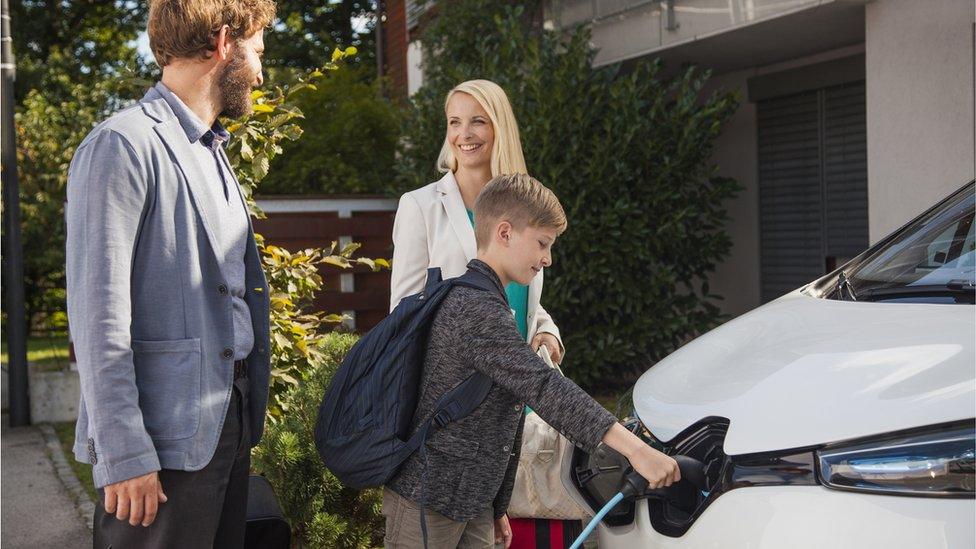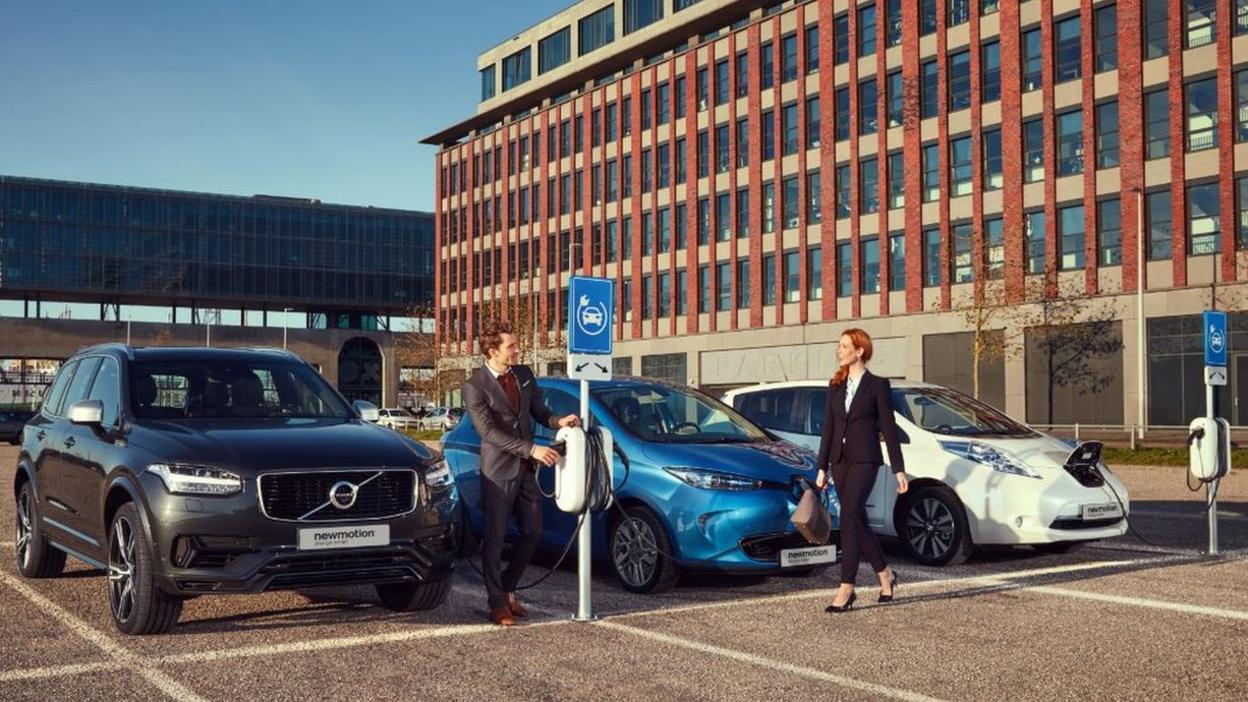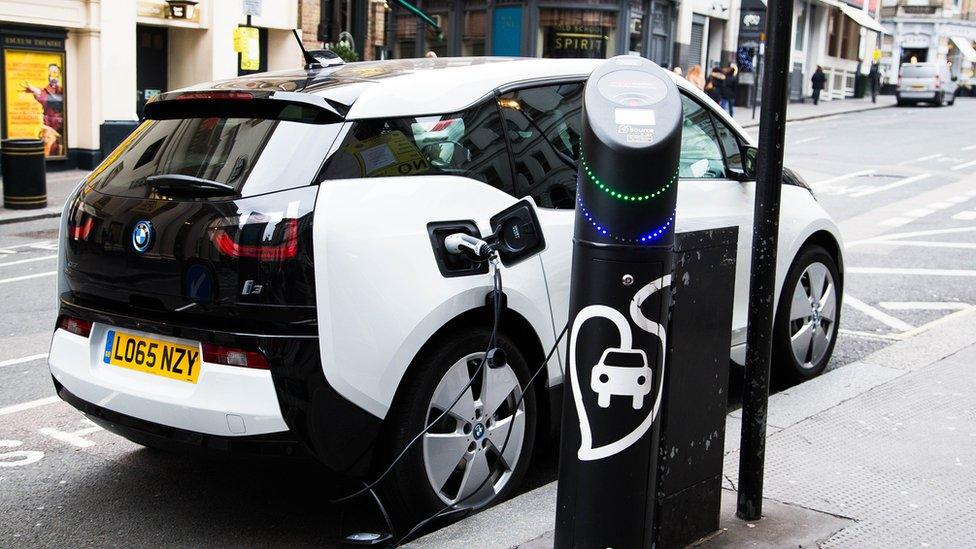Can cars be used as mini power stations?
- Published

The feasibility of using electric vehicles as mini power stations will be tested using government funding of almost £10m.
During the trial involving 1,000 car charging points, electric vehicles will feed power back into the national grid.
It is seen as a key step towards an economy powered increasingly by renewable energy.
The idea capitalises on many drivers' predictable patterns - to work in the morning and back home at night.
While electric cars are charging in the office car park they can be programmed to use power when it is cheapest - when the wind is blowing or the sun is shining.
Under the government's plan, those vehicles would then be driven home and plugged into the grid - not to suck out more power, but to give energy back.
The surge of power from the batteries could come just in time for peak demand in the evenings.
The flow can be reversed again when the wind is blowing at night to charge the electric vehicles (EV) for the next day's commute.
The trial is being run by Nissan and partner firms.
"Allowing EVs to return energy to the power grid when parked will increase grid resilience, allow for better exploitation of renewable sources and lower the cost of ownership for EV owners," a spokesperson said.
"It will lead to new business opportunities and clear advantages for EV users and energy consumers."
Patrick Erwin, from Northern Powergrid, said: "The growth in electric vehicles will provide greater system flexibility and use of renewable energy sources.
"Vehicle-to-grid also offers the prospect of enabling our customers to gain income from their vehicles by selling services to the energy system."
The UK will need more battery storage to hold renewable energy as the country moves towards a target of cutting 80% of carbon emissions by 2050.
South Korea aims to have all electric customers using smart grid technology by 2030.
Follow Roger on Twitter: @rharrabin, external
- Published21 November 2017

- Published12 October 2017

- Published22 August 2017
